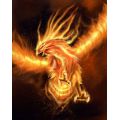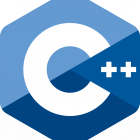Witam
Uczę się obecnie Directx 11, jednak mam obecnie mały problem.
Kod jest z lekcji DirectX SDK June 2010 - Tutorial 4, moje jedyne zmiany w pliku main to zadeklarowanie zmiennej bool mt w strukturze ConstantBuffer oraz przypisanie jej wartości true oraz zadeklarowanie zmiennej mkolor i nadanie jej wartości.
//--------------------------------------------------------------------------------------
// File: Tutorial04.cpp
//
// This application displays a 3D cube using Direct3D 11
//
// Copyright (c) Microsoft Corporation. All rights reserved.
//--------------------------------------------------------------------------------------
#include <windows.h>
#include <d3d11.h>
#include <d3dx11.h>
#include <d3dcompiler.h>
#include <xnamath.h>
#include "resource.h"
//--------------------------------------------------------------------------------------
// Structures
//--------------------------------------------------------------------------------------
struct SimpleVertex
{
XMFLOAT3 Pos;
XMFLOAT4 Color;
};
struct ConstantBuffer
{
bool mt;
XMFLOAT4 mkolor;
XMMATRIX mWorld;
XMMATRIX mView;
XMMATRIX mProjection;
};
//--------------------------------------------------------------------------------------
// Global Variables
//--------------------------------------------------------------------------------------
HINSTANCE g_hInst = NULL;
HWND g_hWnd = NULL;
D3D_DRIVER_TYPE g_driverType = D3D_DRIVER_TYPE_NULL;
D3D_FEATURE_LEVEL g_featureLevel = D3D_FEATURE_LEVEL_11_0;
ID3D11Device* g_pd3dDevice = NULL;
ID3D11DeviceContext* g_pImmediateContext = NULL;
IDXGISwapChain* g_pSwapChain = NULL;
ID3D11RenderTargetView* g_pRenderTargetView = NULL;
ID3D11VertexShader* g_pVertexShader = NULL;
ID3D11PixelShader* g_pPixelShader = NULL;
ID3D11InputLayout* g_pVertexLayout = NULL;
ID3D11Buffer* g_pVertexBuffer = NULL;
ID3D11Buffer* g_pIndexBuffer = NULL;
ID3D11Buffer* g_pConstantBuffer = NULL;
XMMATRIX g_World;
XMMATRIX g_View;
XMMATRIX g_Projection;
//--------------------------------------------------------------------------------------
// Forward declarations
//--------------------------------------------------------------------------------------
HRESULT InitWindow( HINSTANCE hInstance, int nCmdShow );
HRESULT InitDevice();
void CleanupDevice();
LRESULT CALLBACK WndProc( HWND, UINT, WPARAM, LPARAM );
void Render();
//--------------------------------------------------------------------------------------
// Entry point to the program. Initializes everything and goes into a message processing
// loop. Idle time is used to render the scene.
//--------------------------------------------------------------------------------------
int WINAPI wWinMain( HINSTANCE hInstance, HINSTANCE hPrevInstance, LPWSTR lpCmdLine, int nCmdShow )
{
UNREFERENCED_PARAMETER( hPrevInstance );
UNREFERENCED_PARAMETER( lpCmdLine );
if( FAILED( InitWindow( hInstance, nCmdShow ) ) )
return 0;
if( FAILED( InitDevice() ) )
{
CleanupDevice();
return 0;
}
// Main message loop
MSG msg = {0};
while( WM_QUIT != msg.message )
{
if( PeekMessage( &msg, NULL, 0, 0, PM_REMOVE ) )
{
TranslateMessage( &msg );
DispatchMessage( &msg );
}
else
{
Render();
}
}
CleanupDevice();
return ( int )msg.wParam;
}
//--------------------------------------------------------------------------------------
// Register class and create window
//--------------------------------------------------------------------------------------
HRESULT InitWindow( HINSTANCE hInstance, int nCmdShow )
{
// Register class
WNDCLASSEX wcex;
wcex.cbSize = sizeof( WNDCLASSEX );
wcex.style = CS_HREDRAW | CS_VREDRAW;
wcex.lpfnWndProc = WndProc;
wcex.cbClsExtra = 0;
wcex.cbWndExtra = 0;
wcex.hInstance = hInstance;
wcex.hIcon = LoadIcon( hInstance, ( LPCTSTR )IDI_TUTORIAL1 );
wcex.hCursor = LoadCursor( NULL, IDC_ARROW );
wcex.hbrBackground = ( HBRUSH )( COLOR_WINDOW + 1 );
wcex.lpszMenuName = NULL;
wcex.lpszClassName = L"TutorialWindowClass";
wcex.hIconSm = LoadIcon( wcex.hInstance, ( LPCTSTR )IDI_TUTORIAL1 );
if( !RegisterClassEx( &wcex ) )
return E_FAIL;
// Create window
g_hInst = hInstance;
RECT rc = { 0, 0, 640, 480 };
AdjustWindowRect( &rc, WS_OVERLAPPEDWINDOW, FALSE );
g_hWnd = CreateWindow( L"TutorialWindowClass", L"Direct3D 11 Tutorial 4: 3D Spaces", WS_OVERLAPPEDWINDOW,
CW_USEDEFAULT, CW_USEDEFAULT, rc.right - rc.left, rc.bottom - rc.top, NULL, NULL, hInstance,
NULL );
if( !g_hWnd )
return E_FAIL;
ShowWindow( g_hWnd, nCmdShow );
return S_OK;
}
//--------------------------------------------------------------------------------------
// Helper for compiling shaders with D3DX11
//--------------------------------------------------------------------------------------
HRESULT CompileShaderFromFile( WCHAR* szFileName, LPCSTR szEntryPoint, LPCSTR szShaderModel, ID3DBlob** ppBlobOut )
{
HRESULT hr = S_OK;
DWORD dwShaderFlags = D3DCOMPILE_ENABLE_STRICTNESS;
#if defined( DEBUG ) || defined( _DEBUG )
// Set the D3DCOMPILE_DEBUG flag to embed debug information in the shaders.
// Setting this flag improves the shader debugging experience, but still allows
// the shaders to be optimized and to run exactly the way they will run in
// the release configuration of this program.
dwShaderFlags |= D3DCOMPILE_DEBUG;
#endif
ID3DBlob* pErrorBlob;
hr = D3DX11CompileFromFile( szFileName, NULL, NULL, szEntryPoint, szShaderModel,
dwShaderFlags, 0, NULL, ppBlobOut, &pErrorBlob, NULL );
if( FAILED(hr) )
{
if( pErrorBlob != NULL )
OutputDebugStringA( (char*)pErrorBlob->GetBufferPointer() );
if( pErrorBlob ) pErrorBlob->Release();
return hr;
}
if( pErrorBlob ) pErrorBlob->Release();
return S_OK;
}
//--------------------------------------------------------------------------------------
// Create Direct3D device and swap chain
//--------------------------------------------------------------------------------------
HRESULT InitDevice()
{
HRESULT hr = S_OK;
RECT rc;
GetClientRect( g_hWnd, &rc );
UINT width = rc.right - rc.left;
UINT height = rc.bottom - rc.top;
UINT createDeviceFlags = 0;
#ifdef _DEBUG
createDeviceFlags |= D3D11_CREATE_DEVICE_DEBUG;
#endif
D3D_DRIVER_TYPE driverTypes[] =
{
D3D_DRIVER_TYPE_HARDWARE,
D3D_DRIVER_TYPE_WARP,
D3D_DRIVER_TYPE_REFERENCE,
};
UINT numDriverTypes = ARRAYSIZE( driverTypes );
D3D_FEATURE_LEVEL featureLevels[] =
{
D3D_FEATURE_LEVEL_11_0,
D3D_FEATURE_LEVEL_10_1,
D3D_FEATURE_LEVEL_10_0,
};
UINT numFeatureLevels = ARRAYSIZE( featureLevels );
DXGI_SWAP_CHAIN_DESC sd;
ZeroMemory( &sd, sizeof( sd ) );
sd.BufferCount = 1;
sd.BufferDesc.Width = width;
sd.BufferDesc.Height = height;
sd.BufferDesc.Format = DXGI_FORMAT_R8G8B8A8_UNORM;
sd.BufferDesc.RefreshRate.Numerator = 60;
sd.BufferDesc.RefreshRate.Denominator = 1;
sd.BufferUsage = DXGI_USAGE_RENDER_TARGET_OUTPUT;
sd.OutputWindow = g_hWnd;
sd.SampleDesc.Count = 1;
sd.SampleDesc.Quality = 0;
sd.Windowed = TRUE;
for( UINT driverTypeIndex = 0; driverTypeIndex < numDriverTypes; driverTypeIndex++ )
{
g_driverType = driverTypes[driverTypeIndex];
hr = D3D11CreateDeviceAndSwapChain( NULL, g_driverType, NULL, createDeviceFlags, featureLevels, numFeatureLevels,
D3D11_SDK_VERSION, &sd, &g_pSwapChain, &g_pd3dDevice, &g_featureLevel, &g_pImmediateContext );
if( SUCCEEDED( hr ) )
break;
}
if( FAILED( hr ) )
return hr;
// Create a render target view
ID3D11Texture2D* pBackBuffer = NULL;
hr = g_pSwapChain->GetBuffer( 0, __uuidof( ID3D11Texture2D ), ( LPVOID* )&pBackBuffer );
if( FAILED( hr ) )
return hr;
hr = g_pd3dDevice->CreateRenderTargetView( pBackBuffer, NULL, &g_pRenderTargetView );
pBackBuffer->Release();
if( FAILED( hr ) )
return hr;
g_pImmediateContext->OMSetRenderTargets( 1, &g_pRenderTargetView, NULL );
// Setup the viewport
D3D11_VIEWPORT vp;
vp.Width = (FLOAT)width;
vp.Height = (FLOAT)height;
vp.MinDepth = 0.0f;
vp.MaxDepth = 1.0f;
vp.TopLeftX = 0;
vp.TopLeftY = 0;
g_pImmediateContext->RSSetViewports( 1, &vp );
// Compile the vertex shader
ID3DBlob* pVSBlob = NULL;
hr = CompileShaderFromFile( L"Tutorial04.fx", "VS", "vs_4_0", &pVSBlob );
if( FAILED( hr ) )
{
MessageBox( NULL,
L"The FX file cannot be compiled. Please run this executable from the directory that contains the FX file.", L"Error", MB_OK );
return hr;
}
// Create the vertex shader
hr = g_pd3dDevice->CreateVertexShader( pVSBlob->GetBufferPointer(), pVSBlob->GetBufferSize(), NULL, &g_pVertexShader );
if( FAILED( hr ) )
{
pVSBlob->Release();
return hr;
}
// Define the input layout
D3D11_INPUT_ELEMENT_DESC layout[] =
{
{ "POSITION", 0, DXGI_FORMAT_R32G32B32_FLOAT, 0, 0, D3D11_INPUT_PER_VERTEX_DATA, 0 },
{ "COLOR", 0, DXGI_FORMAT_R32G32B32A32_FLOAT, 0, 12, D3D11_INPUT_PER_VERTEX_DATA, 0 },
};
UINT numElements = ARRAYSIZE( layout );
// Create the input layout
hr = g_pd3dDevice->CreateInputLayout( layout, numElements, pVSBlob->GetBufferPointer(),
pVSBlob->GetBufferSize(), &g_pVertexLayout );
pVSBlob->Release();
if( FAILED( hr ) )
return hr;
// Set the input layout
g_pImmediateContext->IASetInputLayout( g_pVertexLayout );
// Compile the pixel shader
ID3DBlob* pPSBlob = NULL;
hr = CompileShaderFromFile( L"Tutorial04.fx", "PS", "ps_4_0", &pPSBlob );
if( FAILED( hr ) )
{
MessageBox( NULL,
L"The FX file cannot be compiled. Please run this executable from the directory that contains the FX file.", L"Error", MB_OK );
return hr;
}
// Create the pixel shader
hr = g_pd3dDevice->CreatePixelShader( pPSBlob->GetBufferPointer(), pPSBlob->GetBufferSize(), NULL, &g_pPixelShader );
pPSBlob->Release();
if( FAILED( hr ) )
return hr;
// Create vertex buffer
SimpleVertex vertices[] =
{
{ XMFLOAT3( -1.0f, 1.0f, -1.0f ), XMFLOAT4( 0.0f, 0.0f, 1.0f, 1.0f ) },
{ XMFLOAT3( 1.0f, 1.0f, -1.0f ), XMFLOAT4( 0.0f, 1.0f, 0.0f, 1.0f ) },
{ XMFLOAT3( 1.0f, 1.0f, 1.0f ), XMFLOAT4( 0.0f, 1.0f, 1.0f, 1.0f ) },
{ XMFLOAT3( -1.0f, 1.0f, 1.0f ), XMFLOAT4( 1.0f, 0.0f, 0.0f, 1.0f ) },
{ XMFLOAT3( -1.0f, -1.0f, -1.0f ), XMFLOAT4( 1.0f, 0.0f, 1.0f, 1.0f ) },
{ XMFLOAT3( 1.0f, -1.0f, -1.0f ), XMFLOAT4( 1.0f, 1.0f, 0.0f, 1.0f ) },
{ XMFLOAT3( 1.0f, -1.0f, 1.0f ), XMFLOAT4( 1.0f, 1.0f, 1.0f, 1.0f ) },
{ XMFLOAT3( -1.0f, -1.0f, 1.0f ), XMFLOAT4( 0.0f, 0.0f, 0.0f, 1.0f ) },
};
D3D11_BUFFER_DESC bd;
ZeroMemory( &bd, sizeof(bd) );
bd.Usage = D3D11_USAGE_DEFAULT;
bd.ByteWidth = sizeof( SimpleVertex ) * 8;
bd.BindFlags = D3D11_BIND_VERTEX_BUFFER;
bd.CPUAccessFlags = 0;
D3D11_SUBRESOURCE_DATA InitData;
ZeroMemory( &InitData, sizeof(InitData) );
InitData.pSysMem = vertices;
hr = g_pd3dDevice->CreateBuffer( &bd, &InitData, &g_pVertexBuffer );
if( FAILED( hr ) )
return hr;
// Set vertex buffer
UINT stride = sizeof( SimpleVertex );
UINT offset = 0;
g_pImmediateContext->IASetVertexBuffers( 0, 1, &g_pVertexBuffer, &stride, &offset );
// Create index buffer
WORD indices[] =
{
3,1,0,
2,1,3,
0,5,4,
1,5,0,
3,4,7,
0,4,3,
1,6,5,
2,6,1,
2,7,6,
3,7,2,
6,4,5,
7,4,6,
};
bd.Usage = D3D11_USAGE_DEFAULT;
bd.ByteWidth = sizeof( WORD ) * 36; // 36 vertices needed for 12 triangles in a triangle list
bd.BindFlags = D3D11_BIND_INDEX_BUFFER;
bd.CPUAccessFlags = 0;
InitData.pSysMem = indices;
hr = g_pd3dDevice->CreateBuffer( &bd, &InitData, &g_pIndexBuffer );
if( FAILED( hr ) )
return hr;
// Set index buffer
g_pImmediateContext->IASetIndexBuffer( g_pIndexBuffer, DXGI_FORMAT_R16_UINT, 0 );
// Set primitive topology
g_pImmediateContext->IASetPrimitiveTopology( D3D11_PRIMITIVE_TOPOLOGY_TRIANGLELIST );
// Create the constant buffer
bd.Usage = D3D11_USAGE_DEFAULT;
bd.ByteWidth = sizeof(ConstantBuffer);
bd.BindFlags = D3D11_BIND_CONSTANT_BUFFER;
bd.CPUAccessFlags = 0;
hr = g_pd3dDevice->CreateBuffer( &bd, NULL, &g_pConstantBuffer );
if( FAILED( hr ) )
return hr;
// Initialize the world matrix
g_World = XMMatrixIdentity();
// Initialize the view matrix
XMVECTOR Eye = XMVectorSet( 0.0f, 1.0f, -5.0f, 0.0f );
XMVECTOR At = XMVectorSet( 0.0f, 1.0f, 0.0f, 0.0f );
XMVECTOR Up = XMVectorSet( 0.0f, 1.0f, 0.0f, 0.0f );
g_View = XMMatrixLookAtLH( Eye, At, Up );
// Initialize the projection matrix
g_Projection = XMMatrixPerspectiveFovLH( XM_PIDIV2, width / (FLOAT)height, 0.01f, 100.0f );
return S_OK;
}
//--------------------------------------------------------------------------------------
// Clean up the objects we've created
//--------------------------------------------------------------------------------------
void CleanupDevice()
{
if( g_pImmediateContext ) g_pImmediateContext->ClearState();
if( g_pConstantBuffer ) g_pConstantBuffer->Release();
if( g_pVertexBuffer ) g_pVertexBuffer->Release();
if( g_pIndexBuffer ) g_pIndexBuffer->Release();
if( g_pVertexLayout ) g_pVertexLayout->Release();
if( g_pVertexShader ) g_pVertexShader->Release();
if( g_pPixelShader ) g_pPixelShader->Release();
if( g_pRenderTargetView ) g_pRenderTargetView->Release();
if( g_pSwapChain ) g_pSwapChain->Release();
if( g_pImmediateContext ) g_pImmediateContext->Release();
if( g_pd3dDevice ) g_pd3dDevice->Release();
}
//--------------------------------------------------------------------------------------
// Called every time the application receives a message
//--------------------------------------------------------------------------------------
LRESULT CALLBACK WndProc( HWND hWnd, UINT message, WPARAM wParam, LPARAM lParam )
{
PAINTSTRUCT ps;
HDC hdc;
switch( message )
{
case WM_PAINT:
hdc = BeginPaint( hWnd, &ps );
EndPaint( hWnd, &ps );
break;
case WM_DESTROY:
PostQuitMessage( 0 );
break;
default:
return DefWindowProc( hWnd, message, wParam, lParam );
}
return 0;
}
//--------------------------------------------------------------------------------------
// Render a frame
//--------------------------------------------------------------------------------------
void Render()
{
// Update our time
static float t = 0.0f;
if( g_driverType == D3D_DRIVER_TYPE_REFERENCE )
{
t += ( float )XM_PI * 0.0125f;
}
else
{
static DWORD dwTimeStart = 0;
DWORD dwTimeCur = GetTickCount();
if( dwTimeStart == 0 )
dwTimeStart = dwTimeCur;
t = ( dwTimeCur - dwTimeStart ) / 1000.0f;
}
//
// Animate the cube
//
g_World = XMMatrixRotationY( t );
//
// Clear the back buffer
//
float ClearColor[4] = { 0.0f, 0.125f, 0.3f, 1.0f }; // red,green,blue,alpha
g_pImmediateContext->ClearRenderTargetView( g_pRenderTargetView, ClearColor );
//
// Update variables
//
ConstantBuffer cb;
cb.mt = true;
cb.mkolor = XMFLOAT4 (1.0f, 0.5f, 0.5f, 1.0f);
cb.mWorld = XMMatrixTranspose( g_World );
cb.mView = XMMatrixTranspose( g_View );
cb.mProjection = XMMatrixTranspose( g_Projection );
g_pImmediateContext->UpdateSubresource( g_pConstantBuffer, 0, NULL, &cb, 0, 0 );
//
// Renders a triangle
//
g_pImmediateContext->VSSetShader( g_pVertexShader, NULL, 0 );
g_pImmediateContext->VSSetConstantBuffers( 0, 1, &g_pConstantBuffer );
g_pImmediateContext->PSSetShader( g_pPixelShader, NULL, 0 );
g_pImmediateContext->DrawIndexed( 36, 0, 0 ); // 36 vertices needed for 12 triangles in a triangle list
//
// Present our back buffer to our front buffer
//
g_pSwapChain->Present( 0, 0 );
}
//--------------------------------------------------------------------------------------
// File: Tutorial04.fx
//
// Copyright (c) Microsoft Corporation. All rights reserved.
//--------------------------------------------------------------------------------------
//--------------------------------------------------------------------------------------
// Constant Buffer Variables
//--------------------------------------------------------------------------------------
cbuffer ConstantBuffer : register( b0 )
{
bool t;
float4 kolor;
matrix World;
matrix View;
matrix Projection;
}
//--------------------------------------------------------------------------------------
struct VS_OUTPUT
{
float4 Pos : SV_POSITION;
float4 Color : COLOR0;
};
//--------------------------------------------------------------------------------------
// Vertex Shader
//--------------------------------------------------------------------------------------
VS_OUTPUT VS( float4 Pos : POSITION, float4 Color : COLOR )
{
VS_OUTPUT output = (VS_OUTPUT)0;
output.Pos = mul( Pos, World );
output.Pos = mul( output.Pos, View );
output.Pos = mul( output.Pos, Projection );
output.Color = Color;
return output;
}
//--------------------------------------------------------------------------------------
// Pixel Shader
//--------------------------------------------------------------------------------------
float4 PS( VS_OUTPUT input ) : SV_Target
{
float4 f;
f = input.Color - input.Color;
if (t){
f = input.Color;
}
return f;
}
Kolor sześcianu powinien się ciągle zmieniać, jednak jest cały czas czarny, niezależnie od wartości jaką przypiszę zmiennej mt, gdy tę cześć kodu zamienię:
float4 f;
f = input.Color - input.Color;
if (t){
f = input.Color;
}
Na:
float4 f;
f = input.Color - input.Color;
f = input.Color;
To kolor sześcianu ulega ciągłej zmianie.
Dlaczego tak się dzieje? Czy zmienna mt nie jest przesyłana, czy może jest to problem innego typu?
EDIT: Problem rozwiązany, nie wiem dlaczego, ale zawsze po napisaniu postu na forum, nawet gdy nie dostanę odpowiedzi udaje mi się rozwiązać problem. Wystarczyło zamienić bool w pliku main.cpp na int, z racji tego że w pliku .cpp typ bool jest traktowany jako jeden bajt, a w pliku .fx jest traktowany jako 4 bajty.

 C++
C++